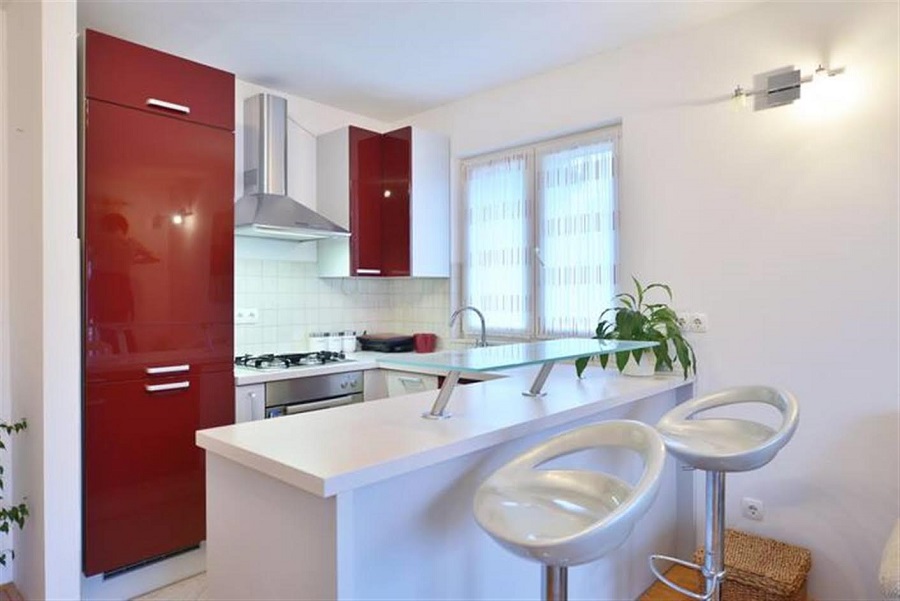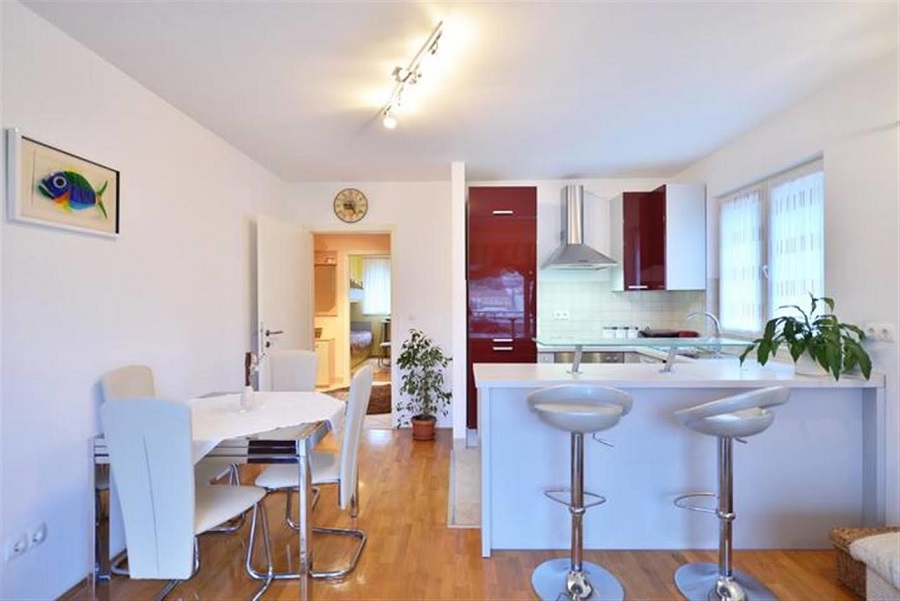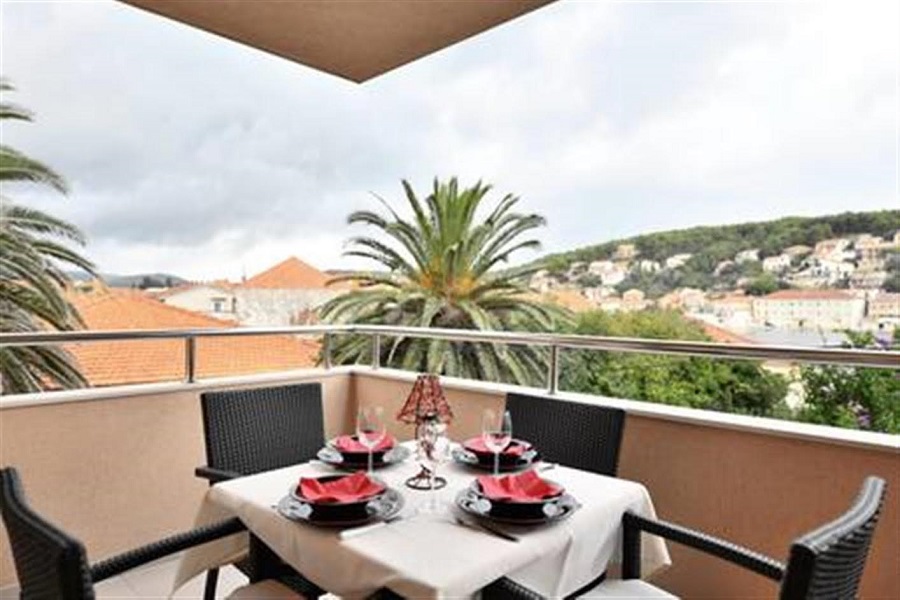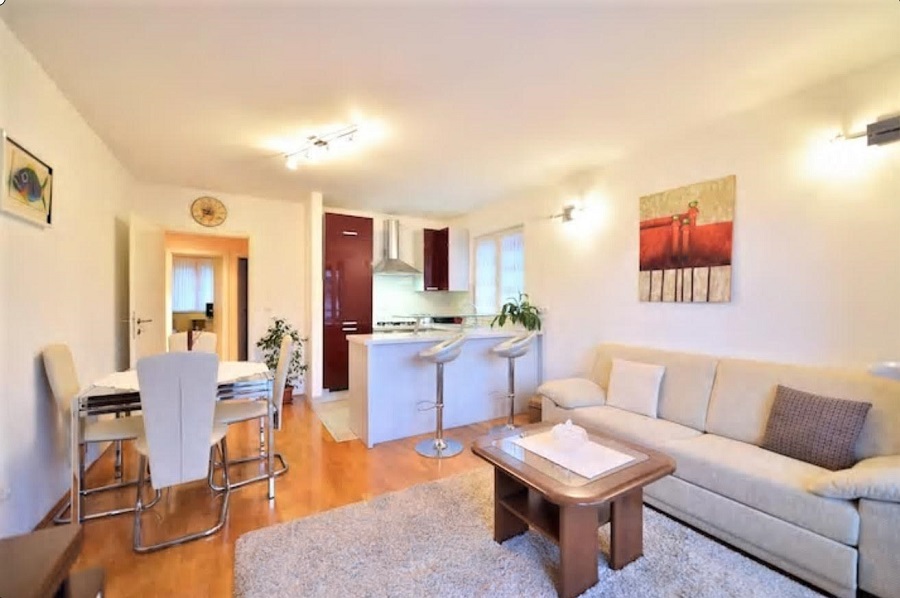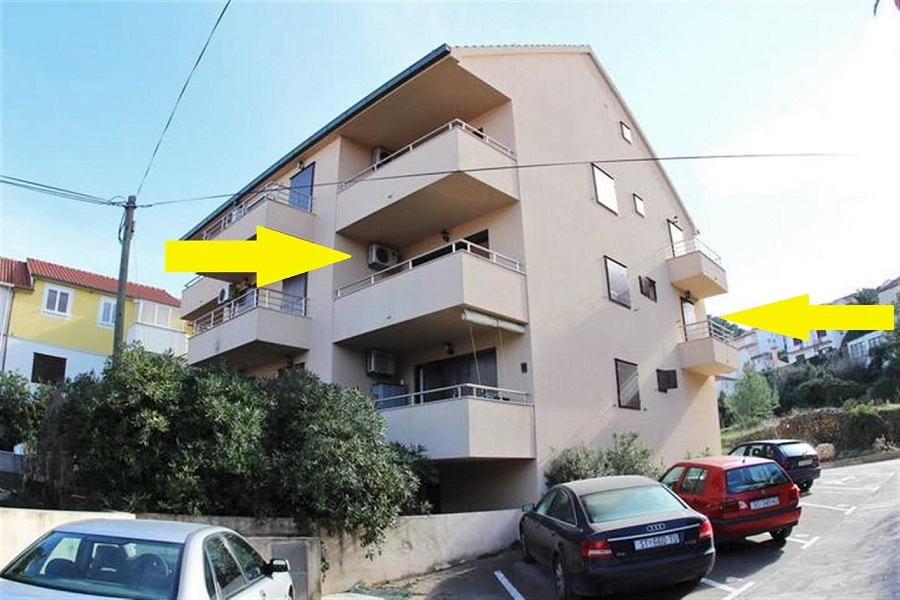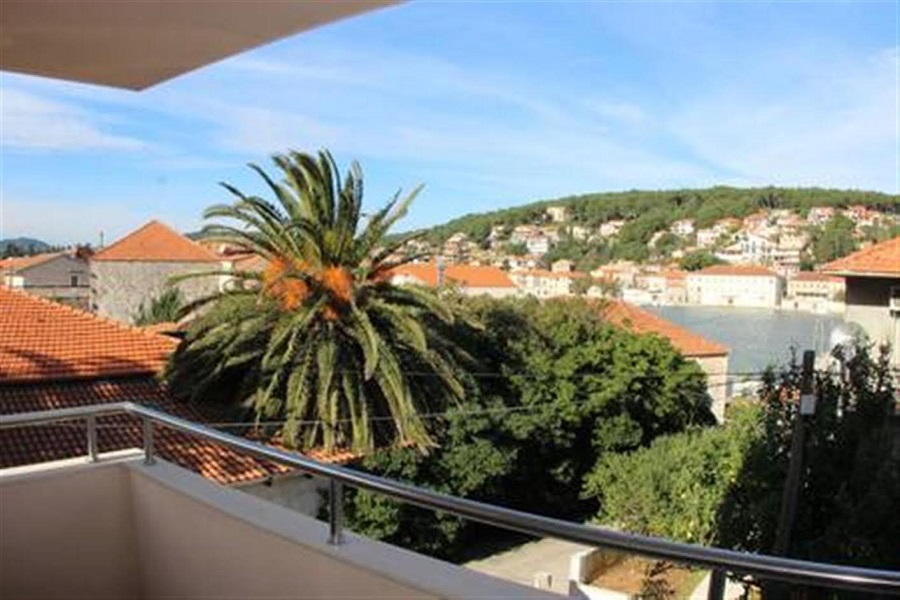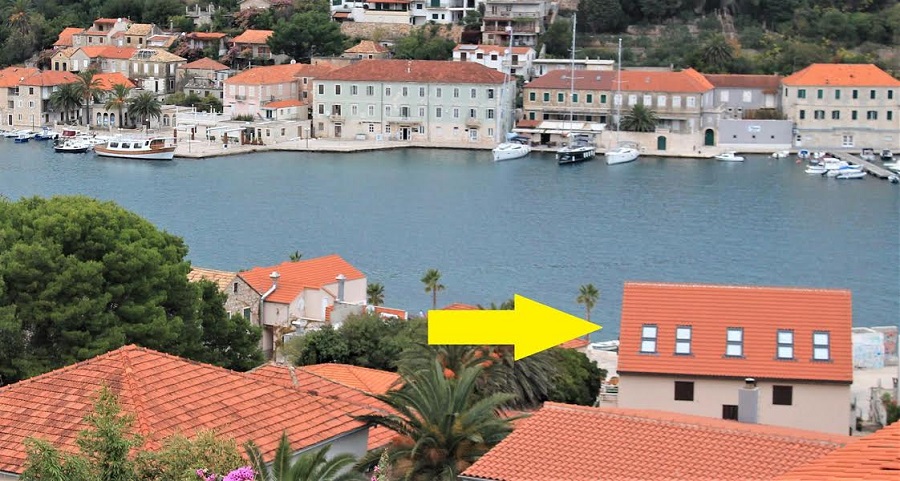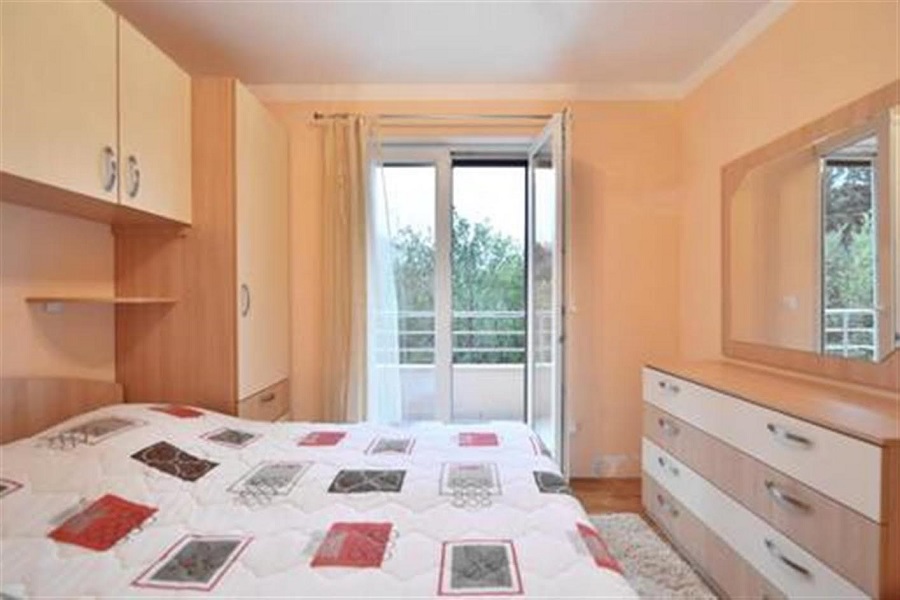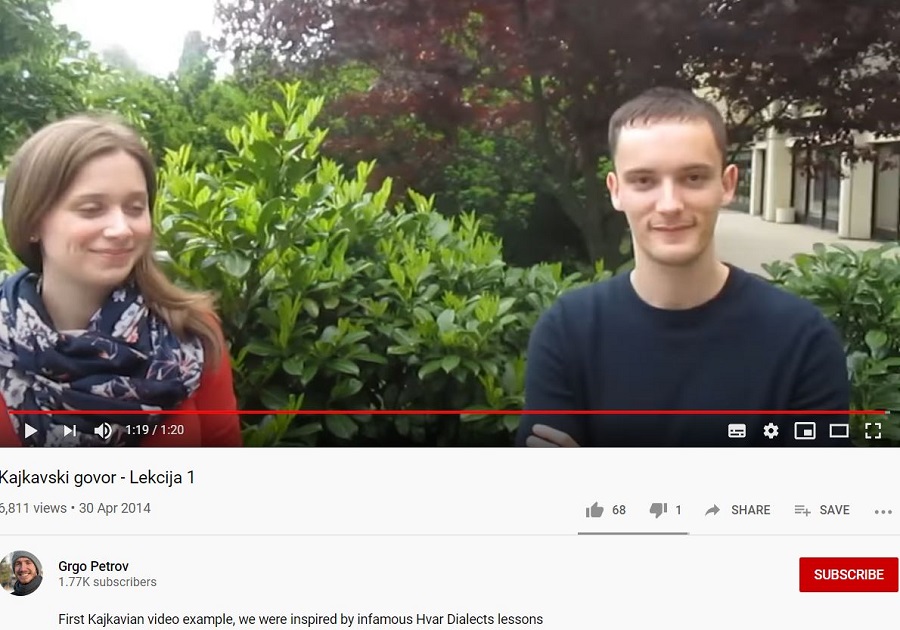Ferry and Cafe Life on Hvar: the New Normal, May 11, 2020
May 11, 2020 - Week 3 of the relaxation of corona measures took effect in Croatia today. A video report on ferry and cafe traffic and life on Hvar on the first day.
A day that many people have been looking forward to in Croatia, and especially for those wanting to visit the island of Hvar. After weeks of self-isolation, the third wave of easing of measures came into effect today, which included freedom of movement within Croatia (apart from the island of Brac after a recent outbreak of cases), as well as the opening of cafes - a psychologically important milestone for coffee culture Croatia.
So how was the opening day? How busy was the ferry, and where were all the visitors coming from?
TCN went to Stari Grad to meet the first ferry after the lockdown, the 10:30 arrival from Split. Life on Hvar is slowly beginning to return to a semblance of normality, not that things will ever be the same perhaps. The first local buses for weeks appeared to meet the arrivals.
After the ferry, TCN took in a coffee in Split, Stari Grad and Jelsa, braving the jugo wind and the inclement weather on this day of supposed freedom, this after weeks of glorious sunshine.
You can get an overview of the first day in the video above, including details of how many foot passengers, how many private cars and trucks, and where the vehicle licence plates were from.
By way of comparison, this is how the ferry experience was on April 18, 2020, during the height of the lockdown:
(Videos produced by Miranda Milicic Bradbury)
Life on Hvar continues, as the island hopes for the commencement of the 2020 tourist season, which is currently very much in doubt.
For the latest from Hvar, follow the dedicated TCN section, and you can also get the latest corona news here.
Trip Report of Belgian National to Hvar by Car on May 7-8, 2020
May 9, 2020 - Driving through the EU during a pandemic, a trip report from Belgian national Didier van Bellinghen who arrived on Hvar yesterday.
A story which I am sure will be of interest to many... Reproduced in full.
As countries prepare for the post corona era and loosen measures step by step, I needed to consider to travel back to Croatia and start organizing for the season. Last November, we travelled back to Belgium after another great tourist season on Hvar and we were still in Belgium when the pandemic broke out. The plan was to travel back to Croatia at the beginning of April but that was not an option anymore with the pandemic being at his peak. Now that we’re allowed to open our resort and beach bar again in a few days, I decided to travel to Croatia by car.
I can hear you thinking… how did he manage to travel all the way from Belgium to Croatia when people are restricted to stay at home and are not allowed to leave their own county or town.
It’s a combination of several things:
- I have a registered residence on Hvar.
- I have a registered business on Hvar, Castaway Hvar.
- My company car is registered on Hvar.
I also have a registered residence and a registered business in Belgium which would allow me to travel back and forth if there would be the need.
So how was my experience traveling across Europe during corona? Well, it was much more relaxed than I imagined. Before you start dreaming, do know that I had all required documents and that I did the necessary research before to do so.
Besides the border controls, I expected some random police controls on the roads as well so I contacted each country I would pass and informed myself what documents were necessary to travel across all those countries. For the countries where I would travel through only such as the Netherlands, Germany, Austria & Slovenia, a valid residence card was enough. For Belgium and Croatia, it was a combination of all documents that gave me the opportunity to leave Belgium and set foot in Croatia.
And so I left on May 7th. I expected border controls between every country but to my surprise, not every country had border controls in place. An overview of the borders and what documents they asked me:
Belgium – Netherlands: No border control
Netherlands – Germany: No border control
Germany – Austria: Border control – They asked my ID card and my Croatian residence card
Austria – Slovenia: Border control – They asked me my ID card and my Croatian residence card
Slovenia – Croatia: Border control – They asked me my ID, my Croatian residence card and checked my business registration documents
But don’t be fooled. On top of the border controls, the police also organizes random mobile controls. I encountered 5 police controls: One in Belgium and one in Germany but on the opposite side of the highway. The third one was on the Croatian highway, on my side of the highway. The police officer asked me my E-pass (A pass that is delivered by the Civil Protection Headquarters or border police when you can present them a good reason to travel between counties and/or to the islands) The 2 last police controls were at the ferry ports. One in Split when embarking and one in Starigrad when disembarking.
When you have a good reason such as a residency / business in any EU member state, you can travel ‘home’ and you are allowed to cross the countries in between. Do your research because every country has it own rules, especially when your residency is in that country.
In my case, I was allowed to leave Belgium for work. I could cross the Netherlands, Germany, Austria and Slovenia without any problem but without any unnecessary stop. I stayed on the highways.
Note that all restaurants are closed at the moment in all those countries. You can get some snacks & drinks at the fuel stations but prepare enough food for your trip.
In Croatia, you will get a pass (propusnica) at the border and the following conditions if you plan to stay longer than 72 hours:
1- You have to travel to your residential address within 24 hours
2- You have to use the highway and travel directly to your address
3- You need to stay in self-isolation for 14 days at your home
4- You need to contact the local police at arrival
5- You need to contact a local epidemiologist at arrival and report your health status regularly.
I arrived on Hvar on May 8th in the evening and the next day, the police already came to control if I was at home.
I want to conclude with this: This is my situation at this moment and I only report how my experience was. Things are changing daily so the most important thing is to do your research if you have similar plans. I seems all pretty frightening but if you do your homework and you have all the necessary documents, it will all go very smoothly as the police, border patrol and Civil Protection Headquarters were very friendly and helpful in my experience.
The opening of the EU borders is a hot topic at the moment. And Croatia is considering to stop the need of a pass. So it might be a lot easier to travel across EU soon anyhow.
Good luck!
For the latest on the coronavirus crisis in Croatia, follow the dedicated TCN section.
Hvar's Arsenal Wins European Heritage Award
May 8, 2020 — Hvar's Arsenal won a “Europa Nostra” award, the continent’s most prestigious prize in the heritage field, honoring the rejuvenation an unavoidable focal point in the city’s port.
One of Hvar’s enduring symbols won in the category of “conservation” for the renovation and strengthening of the Arsenal’s load-bearing structure.
The “Europa Nostra” awards recognize successful conservation and restoration initiatives. Hvar’s Arsenal joins 21 other projects in 15 countries which also earned a “Europa Nostra”. It’s now eligible for the Public Choice Award, decided by an online vote on the European Heritage site.
Independent juries composed of experts from across Europe chose the winners, following a detailed evaluation of applications submitted by organizations and individuals from 30 European countries.
The jury noted that “this respectful revitalization project has adapted a very significant building to the modern needs of the community and adds a new cultural dimension to the tourism of the area. The stratification of the 16th-century building and the later 18th-century theater has been properly recognized in the conservation works.”
The City of Hvar, the Ministry of Regional Development, Split County and Ministry of Culture financed the project. Split-based Spegra carried it out. The company has rehabilitated significant structures for over three decades. It has also fixed Mostar’s Old Bridge, the Bishop’s Palace in Ston, and many other recognizable historic icons in the region.
“This is a joint recognition of the Government of the Republic of Croatia, the Ministry of Culture, the Conservation Department in Split, us in Spegra,” the company’s director Berislav Borovina said. “It is proof that we have done the right thing. The world has recognized this and placed us alongside the highest quality European companies in terms of the restoration of monumental heritage.”
The Arsenal was originally a Venetian shipyard, erected in 1292 to repair and refit war galleons until the Ottomans destroyed it. Hvar’s residents built its replacement — the current stone building — in 1612.
?#EuropeanHeritageAwards #EuropaNostraAwards 2020 winners announced!
— Europa Nostra (@europanostra) May 7, 2020
21 achievements/15 countries?ℹ️ https://t.co/W1dn24lOcF#Conservation#Research#DedicatedService#Education #Training #AwarenessRaising
?️Now it's your turn to vote for the #PublicChoiceAward@europe_creative pic.twitter.com/OEmdB4TIej
The building needed the rejuvenation. Wear-and-tear began betraying the building’s four centuries of existence. Spegra’s work added no extra weight, creating “invisible” improvements while increasing the Arsenal’s stability.
The project took decades of effort, starting with studies and a conservation report that started in 1989, a four-year reconstruction of the load-bearing structure, as well as a lengthy renovation.
The work paused after Roman artifacts and the remains of a first-century building emerged from the ground under the Arsenal.
“It is a very demanding facility that required a high percentage of skilled labor and top craftsmen and workers, and it is specific in its dislocation,” Borovina said. “The execution was very complex, and this is one exemplary example of modern renovation and strengthening of the structure for some future times.”
Its upstairs space was the first public theater in Europe, letting commoners peasants and aristocrats mingle.
The building reopened last year, joining a flood of restorations wrapped up on the 150th anniversary of organized tourism on Hvar. It included both the Arsenal and the theater, and the Hotel Palace Elisabeth.
This isn’t the first time Croatia’s won a Europa Nostra award. In fact, many of its landmark structures and events earned the designation over the last two decades, including the Alka of Sinj Museum and the Betina Museum for Shipbuilding.
Discover Sveta Nedjelja on Hvar: Wine, Cliffs, Wedding Sunset Magic (VIDEO)
May 7, 2020 - Continuing our new vlog, TCN Talks, today we discover Sveta Nedjelja on the south side of Hvar - wine, wedding, rock climbing and sunset territory!
Where to go on a day off on Sunday on the island of Hvar? The village of 'Holy Sunday' of course...
Meet Sveta Nedjelja on the south side of Hvar in the latest installment of our new vlog, TCN Talks.
It is a village which is famous for the rich Plavac Mali wines produced from the very steep vineyards sloping down into the Adriatic, with Zlatan Otok's Plavac Mali Grand Cru one of the most highly-prized reds in all Croatia.
But there is a lot more to Sveta Nedjelja than just wine, as we discover sitting on the bench in idyllic Veli Kamik, the small islet which is fast becoming in an Instagram and wedding location hit (learn more about this delightful spot in our recent feature article on Veli Kamik).
And of course, to reach Sveta Nedjelja, you have to negotiate the Pitve tunnel
Here is a guide to the iconic tunnel's history, driving etiquette - and wine cellar.
Being to enjoy the idea of Bench Tourism? Here is a detailed overview of not only probably the best view in all Dalmatia, but also one which is extremely content-rich and full of magic.
And for those who like to wander, there are few better walks than that along the northern coast of Hvar, from Jelsa to Vrboska. Here is what awaits when you reach the place which is often called 'Little Venice.'
If you would like to follow TCN Talks and our random journey through life in Croatia, you can check out the channel here.
Looking to learn more about Hvar? All the best online tools are in our Virtual Croatia - Discover Hvar.
How the Professor of Hvar Dialects Helped Preserve Croatian Culture & Tradition
May 7, 2020 - What a lovely email! How a fun YouTube series in the early days of TCN became a national phenomenon. It is all thanks to Professor Frank John Dubokovich, Guardian of the Hvar Dialects.
It started out as a joke, something to fill some content in the first month of my new portal, Total Hvar, way back in November 2011. It became such a cult hit that it soon hit national television, then British reality TV, and now - so I learned today 8.5 years later, a catalyst to preserve some of Croatia's dying culture forever.
My good friend from Jelsa, Frank John Dubokovich, was born in New Zealand but moved back to Jelsa at the age of 8, the Hvar town where his family are from. So he grew up bilingual, actually trilingual.
For Frankie spoke Jelsa dialect, which is a whole linguistic sub-species of its own.
An idea was born, to do a short video series of the differences between Jelsa dialect and standard Croatian, looking at different aspects of life - food, months of the year, articles of clothing - to demonstrate the differences. It started with the infamous Dalmatian Grunt, a video which is sadly no longer available online currently (but which I am trying to find), and which amassed almost 100,000 views on YouTube when I saw it last year.
As his flock grew, so did Frankie's authority, and he became the self-styled Professor Frank John Dubokovich, Guardian of the Hvar Dialects. Here is one of the original lessons, in which he investigates parts of the body in Hvar dialect, including a live demonstration of shaking his ass.
His fan base was truly international. The then assistant coach of the Australian football team jetted in from Sydney to meet with The Professor.
So impressed was Ante Milicic with The Professor that he even had his voice on his ring tone and wake up call.
It was only a matter of time before national television came calling.
HRT asked us to record a special lesson on dialect words for wine, which featured on their promo video 'Susur' in July, 2015. The Professor makes his entrance at 04:18 in the programme, above.
With such colossal talent, it was not long before the international talent scouts were in touch with TCN, and The Professor and his Hvar dialects were soon starring on British television reality shows.
How to get a bunch of chavs into Dalmatian grunting - genius!
So brilliant was The Professor that he even taught us how to speak Hvar dialect using only vowels on a guest appearance in Split.
And that is where I thought the story ended. A lot of fun on the way, and a lot of beautiful women falling at The Professor's feet, and the occasional Australian football coach waking up to the dulcet tones of The Professor each morning.
Until today.
Until the loveliest email of the year.
From Grgo.
Hey Paul! We haven't met in person but you've had a huge influence on me and what I have been doing last couple of years. It took me long time to finally contact you haha.
I want to thank you for the Hvar Dialect Lessons you started posting on YouTube 5-6 years ago. I was in shock, just like the rest of my friends from Zagreb and the area. It was super entertaining but also educational. It made me think (and the rest of us) how our authentic local heritage was fading away. General unawareness of this local universe we have across Croatia.
What happened next is I started recording the "Kajkavski lessons of Marija Bistrica" on YouTube with my local native speaker...in the end I spent most of my University along with my master project all about preserving and promoting local dialects and values in Croatia.
I graduated as a visual communications designer so I wrote and illustrated a tale in Kajkavski idiom, then posters and picture books for children...
Following that I started recording other people along the coast. Just last year spent two weeks on Dugi otok island recording the locals stories and their dialects. The project started connecting the locals across Croatia raising awareness. Schools and parents are calling me for the presentations... it's just crazy.
And all of it kind of started when I saw the first "Hvar Dialect Lesson" you posted. ?
Cheers from Zagreb!
Grgo
Love it. And so will Professor Frank John Dubokovich, Guardian of the Hvar Dialects, when he learns that we will be taking him all the way to Marija Bistrica to meet Grgo and do a Mother of All Dialects lesson when all this madness is over.
I can't wait, even though I probably won't understand a word.
Professor, we salute you. Your infamous grunt has inspired the preservation of more Croatian culture that the uhljebs in the ministry in an entire mandate.
I can't wait to hear how the grunt sounds in Marija Bistrica.
You can follow Grgo's excellent YouTube channel here.
Meet the Zlatan Otok Wine Cellar in the Pitve - Zavala Tunnel on Hvar (VIDEO)
May 7, 2020 - TCN Talks a video guide to the history, etiquette and secrets of the legendary Pitve Tunnel on Hvar, complete with its own Zlatan Otok wine cellar.
One of the main fun experiences for tourists on the island of Hvar is the adrenaline run through the Pitve tunnel to the south side and Zavala. It is like no other tunnel you will find back at home...
The tunnel opened in 1963 when the Yugoslav army drilled through 1.4 km of rock to bring water to the south side of the island. It was a fairly crude effort, and there was no attempt to render the rock once construction was completed, which makes it one of the great undiscovered film locations today.
The tunnel is 2.3m wide do there is only room for one-way traffic. Traffic lights operate in the season, but out of season, locals are left to judge for themselves if they can make it to one of the two passing places built in the tunnel before meeting any oncoming traffic.
And the tunnel has one big secret that not so many people know about, and even fewer have seen - its own wine cellar!
When the tunnel was originally constructed, two large storage rooms for water were constructed. Only one of these was actually used, apparently, which gave an idea to Hvar's famous winemaker, Zlatan Plenkovic from the Zlatan Otok winery in Sveta Nedjejla.
Zlatan, who sadly passed away suddenly a few years ago, managed to come to an arrangement to use the empty space as a wine storage facility in the early 1990s (thanks to his widow Maja for the information). The constant cool temperatures are ideal for wine storage.
If you drive slowly in the Pitve tunnel as you enter from the north, you will see both storage rooms about 30 metres in on the left.
You can learn more about the Pitve tunnel in the latest TCN Talks vlog, following our visit last week.
For more news from the island of Hvar, check out the dedicated TCN section.
Meet Patricia Yeo, Celebrated Head Chef of Maslina Resort on Hvar
May 7, 2020 - Maslina Resort is a five-star boutique hotel, slated to open this summer in Maslinica Bay on the island of Hvar, just minutes away from the UNESCO-protected Stari Grad.
As Maslina Resort gears up for its summer opening in Maslinica Bay on the island of Hvar, it is actively recruiting to craft the ideal team.
With a mission to honor the UNESCO-protected Mediterranean diet on the island, the Wine & Dine department at Maslina Resort is of crucial importance - and perhaps the most prominent character to the puzzle is pronouncing the perfect chef - Patricia Yeo.
By fusing elements of an international upbringing that took her from Malaysia to England to the United States, with a precision that she honed as a trained scientist, Patricia Yeo has been celebrated for her unique cuisine ever since her first restaurant, AZ, opened in 1999. The favorite of The New York Times also received two Michelin stars in 2002.
But the accolades didn’t stop here. After AZ, Yeo received three New York Times stars for a Mediterranean concept Pazo in 2004, and in 2008, two New York Times stars for a French-Vietnamese restaurant Sapa, all while consulting and launching projects in Boston.
After over twenty years in fine dining in Manhattan, Yeo explored a more corporate role in national and international restaurant groups, and her culinary prowess was pivotal in restaurants within hotels in Las Vegas, the Caribbean, London and Singapore. Hooked by the luxury travel bug, Yeo roamed to remote and exotic locations around the world, from stints in Oman and Turkey with Six Senses to Shina Mani Wild in the jungles of Cambodia while overseeing food and beverage services at Shinta Mani and Treeline in Siem Reap.
Promising to balance traditional and innovative techniques, and local and international culinary styles, Patricia Yeo is the ideal candidate to lead the culinary team at Maslina Resort. TCN met up with Patricia to learn more about her role in the new luxury resort.

Nataly Lee
First, tell us a bit about yourself and how you came to being head chef at Maslina Resort?
I am culturally confused; I'm of Chinese ancestry born in Malaysia, raised in the UK and the US. I’ve also lived for extended periods in five other countries. All this traveling is a real advantage culinarily.
I was browsing LinkedIn and saw a post for the chef position at Maslina, I usually would not respond, but on a lark, I sent Zoran a note, he responded in 2 hours, and two weeks later I was moving to Croatia.
How would you explain your culinary philosophy?
I think my food is very much ingredient-based. Use the best ingredients and treat them with respect. This means using meats that are ethically grown and killed humanely, using the whole animal not just the prime cuts, fish that is locally and preferably line caught (i.e., not trawled with large nets which catch fish indiscriminately trapping young breeding fish interrupting the live cycle), produce that is locally grown and in season. This means I do a lot of preserving, whether it is pickling, curing, jamming, dehydrating. It allows me to use cherries in December because I brandied it in June.
How will this philosophy integrate into the cuisine at Maslina Resort?
Part of the reason I am so excited to be at Maslina, is because it is a prolific growing region with a great variety of fish and game. I have gone foraging with a local lady who is an ethnobotanist, and there are so many wild plants and herbs that are edible. Having the ability to use local, foraged ingredients is such a treat. I can’t wait for the mushroom season this fall. As someone who is inspired by ingredients I am in heaven, nothing inspires and excites more than picking perfect kumquats from a fruit-laden bush or watching figs ripen on a tree down the street. Really, everywhere one walks on Hvar, there are sights and smells that inspire, rosemary, pine, wild sage, briny sea breeze, lemon blossom. It is fabulous.
How will you implement local producers and suppliers?
We are fortunate at Maslina to have a great organic garden that is in a sheltered bay with lots of light, water, and well protected from the winds. Mario, our fabulous head gardener, will be able to grow a lot of herbs and soft greens for the kitchen. We are also going to work with a number of farmers from the Stari Grad Plains, and in some cases, they will grow specialty products for us and in others, we will simply use what they normally grow. We have made really good contacts from local goat cheese producers to beekeepers for honey and wax to fishermen. Because of the style of the menu (which will change daily, we are able to work with whatever ingredient they bring us. It is a more organic way of cooking, letting the ingredients dictate what we cook rather than having a menu dictate the ingredients we use. It is also a lot more fun.
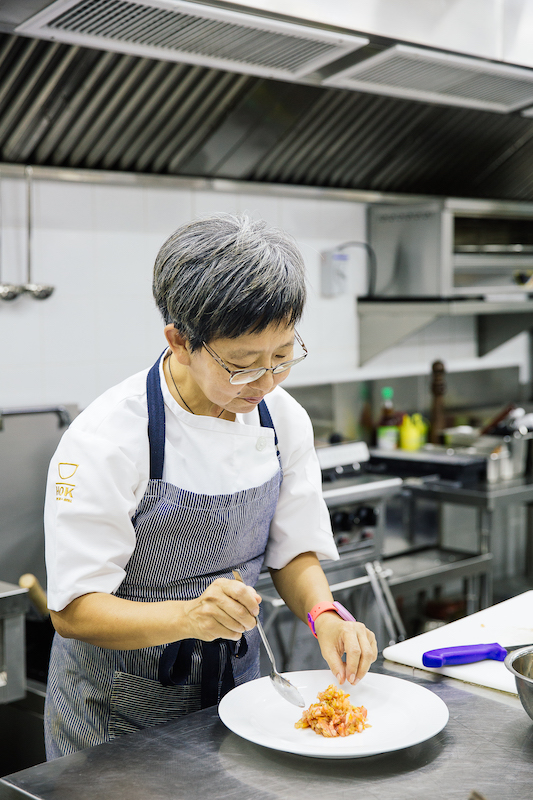
Nataly Lee
What would you name as the key differences between working in a hotel or resort and a standalone restaurant?
The main difference is not the work in the kitchen, by that, I mean the cooking and production of good food are the same in both cases. The difference is the financial aspect of the business. As a chef of a standalone restaurant (especially if you are also the owner), there is a constant worry about making enough to pay the bills. In a resort or hotel, one of the most expensive fixed cost is eliminated. Rent usually takes up as much as 40% of a restaurant’s revenue, so with not paying rent, you are already ahead of the game.
From a Food & Beverage perspective, what is required to operate in a luxury resort?
Producing good food, whether it is in a luxury resort, a fine dining restaurant or even in your home kitchen, is the same, I think. You need to care about what you are doing; you need to be flexible and adapt to the needs and desires of your guest, you need to create a great environment for your guests to enjoy the meal. Luxury means different things to different people. Luxury, for me, means having a choice, be it caviar and champagne or a grilled cheese sandwich. Our goal is to provide this choice.
Has the island of Hvar and Croatia been able to provide everything you need so far?
It has been fabulous, not just in terms of cuisine but also in terms of a wonderfully beautiful place to live. The people in Stari Grad have been so warm and welcoming. They are so willing to share recipes, cooking techniques, local knowledge of ingredients.
What are you looking forward to most about running the kitchen at Maslina Resort? And about being in Croatia?
One of the first things I am going to do once I can get into the kitchen at Maslina is cooking for my co-workers, who have become my family in Croatia. There is nothing better than cooking for the people you love.

Nataly Lee
To read more about travel in Croatia, follow TCN's dedicated page.
TCN Talks: An Adriatic Walk from Jelsa on Hvar to Discover Vrboska (VIDEO)
May 4, 2020 - Just because we can't physically travel right now, that does not mean we cannot enjoy destinations remotely. TCN Talks, our new vlog takes in the Adriatic on a walk from Jelsa to discover Vrboska on Hvar.
When I first moved to Croatia back in 2002, I had a very strict routine. I would get up at 06:00 in my home in the old town of Jelsa and then walk all the way to Vrboska, about 40 minutes away. It was - still is - a delightful little walk along the Adriatic, with its pine forests and gorgeous hidden coves. And first thing in the morning, when there is nobody around, it is magical. And the prize at the end of the walk - to discover Vrboska!
I would have a morning coffee in a cafe in 'Little Venice' then walk back home to Jelsa, enjoying that peace, tranquility and view in reverse, and then be fully ready for work at 08:00, fully energised.
I kinda miss those days...
I found myself walking along the route again last week, then decided to film a little. People have been enjoying (or at least they claim to) the short videos of Hvar under lockdown that I have been posting on my Facebook page, and do I decided to capture some of the current magic.
Then, when I reached Vrboska for the first time in a year, I fell in love again once more, and I decided to film parts of this lovely slice of heaven, as well as add some of the knowledge I have acquired about Vrboska over the years and then turn it into the latest installment in our new experimental vlog (I will find my 'voice' soon) - TCN Talks.
I am VERY open to feedback and suggestions (and yes, I called the church a cathedral by mistake), so please leave any comments under the video.
To discover Vrboska in more detail, here are 25 things to know about Little Venice.
Barba Andro Turns 104 on Hvar, Still Mending Fishing Nets in Stari Grad
May 3, 2020 - As Barba Andro turns 104 in Stari Grad on Hvar, what is the secret for a long and fulfilled life?
He was born during the First World War, survived the Spanish Flu and served in the Second World War, and for many, many years, he has been one of the most recognisable icons of Stari Grad on Hvar.

Barbe Andro Muse, a fisherman by trade, whose dedication and expertise in repairing fishing nets over many years has made him one of the most-loved characters in Stari Grad. For many years, I would admire him from afar at Pizzeria Marko, as he worked tirelessly away repairing nets all day long, cigarette never far from his mouth (he has been a regular smoker for over 80 years).
Everyone is allowed one vice, but perhaps the secret of Barba Andro's longevity is a combination of the temperate Hvar climate, its UNESCO Mediterranean Diet, including plenty of fish caught by himself over the years, the relaxed 'laganini' lifestyle, and a great work ethic.
In honour of Barba Andro's 103rd birthday last year, local TV reporters Maja Zrnic and Jurica Vodanovic put together this wonderful tribute to him, reflecting on his many years on Hvar and his dedication to those fishing nets, which he still diligently repairs without the aid of glasses.
From surviving the Spanish Flu a century ago, to surviving corona today, Barba Andro keeps soldiering on.
And the tributes continue, this birthday message from Hvar Island Concierge, below.
Happy 104th, Sir!
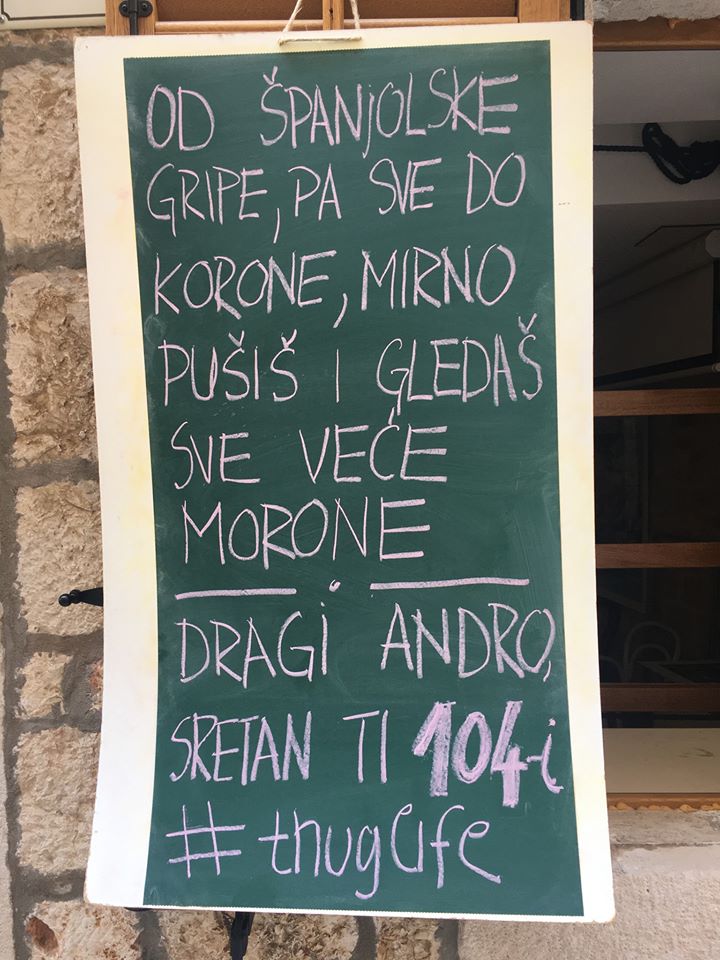
To learn more about the magic of Stari Grad, here are 25 things to know.
Property of the Week: 2-Bed Apartment with Sea View in Jelsa, Hvar
May 3, 2020 - While many are struggling financially due to corona, others are buying real estate. The latest Property of the Week comes from Jelsa on Hvar.
I was chatting to a friend in the real estate business in Montenegro a couple of weeks ago, and I was quite surprised by his response when I offered my commiserations on how his business must be faring.
"On the contrary," he replied, "business is doing surprisingly well."
There was apparently a marked rise in the number of short-term rentals being sought, as people looked for more inviting lockdown options, but also a number of buyers seeing opportunities to get a good deal in the current climate, with several sales concluded by phone.
So what is on offer in Croatia at the moment? We touched base with Trogostan, the oldest real estate agent in Split, to see what was currently on their books. And we take a virtual ferry ride to the island of Hvar this week for this week's Property of the Week, from where - among other things - you can get a great view of the terrace that is the current TCN HQ.
EXCLUSIVELY OFFERED BY TRGOSTAN:
A two-bedroom apartment of 55,52 sqm, located in the newer object 2nd row from the sea, in a great location - few steps from the beach and all amenities, on the 1st floor, consisted of two bedrooms, kitchen with dining/living area, bathroom and two balconies with a sea view, parking spot of 15 sqm next to the building, fully furnished and equipped.
Price - 135,000 euro.
For more information, and to book a viewing, visit the Trgostan website.


